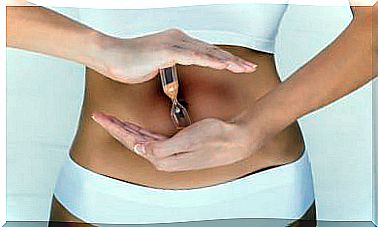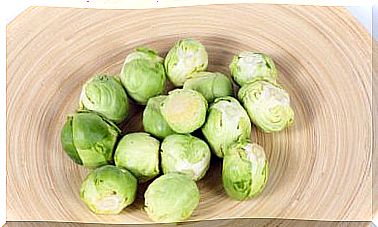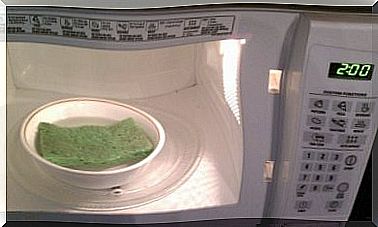High Pull, What Muscles Do You Exercise And How Do You Do It Correctly?
Putting together a training routine is the foundation for any significant physical change. However, the real key is in the exercises that manage to develop several muscle groups at the same time. To that end, the high pull is among the best options in the fitness world.
As it is a compound exercise, that is, it combines two performances simultaneously, it requires dynamics and explosiveness in practice. This is usually used by high-performance athletes who require greater strength and muscle mass in the upper body, such as weightlifters, swimmers, tennis players and boxers.
After everything described above, the muscle consolidation adventure begins, in which we show you the benefits of the high pull, the muscles it works, how to do the training correctly, the precautions that must be taken care of and some useful variations.
What benefits does it have on the body?
Leaving aside how multifunctional the high pull is to tone large muscles of the body, we can mention a series of associated benefits that make it the favorite of elite athletes:
- Power: the fact of being an exercise that requires the injection of force for a short period of time provides an increase in power with the accumulation of routines.
- Resistance: maintaining the tension in the muscles, both in the rise and in the descent of the bar or dumbbells, generates that the efforts can be supported to a greater extent gradually.
- Strength: the strength gain with the high pull prevails in the legs, hips, upper torso and arms.
- Joint Health: Safe weight movements make the joints benefit from strengthening work on the surrounding muscles.
- Muscle mass: the high pull can act as a promoter in relation to the gain of muscle volume. This will depend, in turn, on the set load and set repetitions.

Muscles that the high pull works
The list of muscles that are worked is very extensive. However, the variation of the exercises dictates certain modifications regarding the location. Therefore, only based on the generic version of the high pull the following are favored:
- Brachial biceps.
- Triceps brachii.
- Quadriceps femoris.
- Erector spine.
- Lumbar square.
- Rhomboid major and minor.
- Deltoid.
- Latissimus dorsi.
- Trapeze.
- Buttocks: minor, medium and major.
- Hamstrings.
- Abs: rectus abdominis, pyramidal, transverse, external oblique and internal oblique.
- Gastrocnemius: the twins.
- Soleus
The ability of this movement with weights to attack in a primary, secondary and even tertiary way muscles that seem distant from the area of greatest physical explosion, gives an indication of the importance of not failing the mechanics of the exercise. Otherwise, the injury can lead to a high-risk chain reaction.
How do you do the exercise?
To start with the basic high pull, it is essential to have two dumbbells and comfortable sportswear that facilitate both upward and downward movements. Below is the step-by-step for proper job:
- Stand with your feet parallel and at a distance, taking your shoulder position as a reference.
- Grab a dumbbell in each hand, implementing a solid grip over the head.
- Position the dumbbells just below your knees. This is achieved with a slight forward leaning of the torso and dropping the length of the arms.
- Use maximum power and explosiveness to raise both dumbbells, together, to about shoulder height. During this step, the torso should be upright and the feet on tiptoe.
- Slowly reduce the intensity and dial the dumbbells down to the starting position.
- Repeat the procedure according to the resistance, strength and response of the body. The series can vary from 3 to 5 and the recommended repetitions are between 4 and 6.
The high pull is a complete exercise because it works several muscle groups at the same time. However, it can trigger different physical problems if it is not done strictly.
Caution and care
The greater the number of muscles involved in a compound action, then caution and care must also be greater. In that sense, we recommend paying attention to these factors.
Heating and cooling
In order to move weight lifting away from the injury zone, the warm-up before the effort and the cool-down afterwards are very important. It does not take much time or wear, but they are capable of ruling out many problems in the long run.
In the case of warm-up, it becomes effective to apply aerobic movements for about 10 minutes. In turn, an integral stretch may be sufficient during cooling.
Gradual application of effort
The impetus for immediate results should not be what controls actions. In fact, it must be analyzed where the body is and if there are any extra factors associated, such as previous or existing diseases that limit effort.
Therefore, it is best to gradually increase the loads, repetitions and series, thus noting each of the body’s signals. It is important to move forward and not get bogged down by overexertion at the first change.
Enough rest
Rest is the aspect that gives the muscles room for improvement. Thus, if a minimum of 24 hours of rest is not fulfilled, the pain and injuries will not take long to appear. On the other hand, rest times tend to change with the accumulation of workouts and variations of the high pull.
Variations for the routine
When we mentioned that muscle impact zones can be modified, we thought of variations for the high pull routine. Accordingly, depending on the basic style of the exercise, the following components can be added.
High barbell pull
- Set your feet parallel, shoulder-width apart. The location should leave the tibia of each leg less than 10 centimeters from the bar.
- Grab the barbell with the palms of your hands pointing toward the ground.
- Raise the bar to a position higher than the shoulders, using a high intensity.
- Lower the bar slowly and support it.
- Repeat the exercise 5 times for 4 sets.
High pull on one arm
- Position your feet in the same line as your hips.
- Grab a dumbbell with the signature overhead grip.
- Let the dumbbell apply tension as you lift your torso and keep your arm straight.
- Explosively lift the dumbbell to a position that is close to your shoulders.
- Slowly return the dumbbell to the starting position.
- Apply the exercise with the other arm.
- Use the routine with a maximum of 5 sets of 6 repetitions.

High pull squats
- Place your feet about 8 inches apart.
- Implement an overhead grip with both dumbbells.
- Lean slightly into the front position and allow the weights to come down to the lower knees.
- Lower yourself into a squatting stance.
- Raise the dumbbells at the same time with power as far as your arms allow. This step is carried out with the torso upright and should end with the feet on tiptoe.
- It ranges from 2 to 6 reps for 5 sets.
Back upright to avoid injury
Finally, it is recommended to see a specialized doctor if the high pull or any of its variations generate pain beyond the usual tension of explosive routines.
In addition to this, for a correct execution one should not lose sight of the importance of keeping the back upright during the lift, since it represents the greatest cause of injuries.
Strength, power and endurance are not gained in a short time. Therefore, it is preferable to set achievable goals in the short, medium and long term to measure evolution without falling into excesses and injuries.







